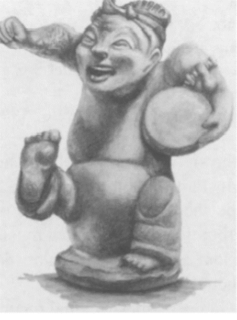Negotiating identities: Disablement in Chinese Writings

The notion of disability – as it is currently understood – first emerged in Europe no more than two centuries ago, brought about by the epistemological shift of modern science. In China, as well as in Europe, the concept played a central role in the development of the capitalist economic theories of the workforce, in which justifications based on modern scientific approaches served to diminish and segregate disabled individuals. In the realm of academia, moreover, the study of disability – beyond the sole medical approach – represents a rather new subject of enquiry. This is even more the case for studies related to China, as most of the researches have yet focused on European or North American contexts.
The paucity of such studies is often linked to the scarcity of sources mentioning the topic in pre-modern China, and to the lack of representation, statistics, and public discussion on disability in contemporary China. Yet, we should not make the mistake of thinking that people living in the past were completely unfamiliar with what we would now label “disability”; nor we should consider that disability is somewhat less prevalent or important in contemporary Chinese environments. Indeed, as shown by different sources in Chinese writings, disablement is/was present, although framed in very different ways. Consider for example the following passage attributed to Confucius (6th-5th century BCE) from the Lunyu 170-1 ([‘Wei Linggong’])”:
師冕見,及階,子曰:「階也。」及席,子曰:「席也。」皆坐,子告之曰:「某在斯,某在斯。」師冕出。子張問曰:「與師言之道與?」子曰:「然。固相師之道也。」
Music Master Mian paid a visit [to Confucius], and when he reached the steps the Master (Confucius) said: ‘There are steps.’ When he reached the mats, the Master said: ‘There are mats.’ When everyone had sat down the Master told him: ‘Such
and such a person is here; such and such a person is there.’ Music Master Mian
left, and Zizhang asked: ‘Is that the way to speak to a Music Master?’ Confucius
said: ‘Yes. That is definitely the way to guide a Music Master’.
(Quoted from: Milburn, Olivia (2017): “Disability in Ancient China”. In: Laes, Christian (ed.). Disability in Antiquity. London & New York: Routledge, pp. 106-118.)
As such, this course, taught by Jacopo Nocchi, introduces students to the study of the notion of ablement/disablement as described in Chinese writings and literature throughout history. Both, the Seminar and the Reading Course adopt a historiographic approach, although students are also encouraged to analyse and compare how Chinese sources from different epochs and social backgrounds reflect on such topics. Therefore, the courses mainly addresses the question of whether there is something inherently and uniquely “Chinese” in the description of disablement in Chinese writings. Finally, we also deal with the problem of constructing a general understanding of what “disability” is and how this might fit into the Chinese context.
